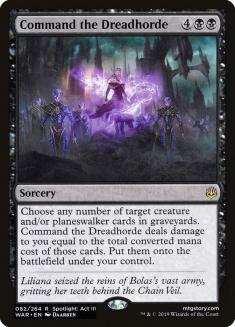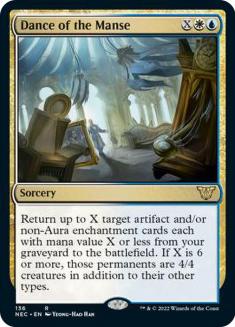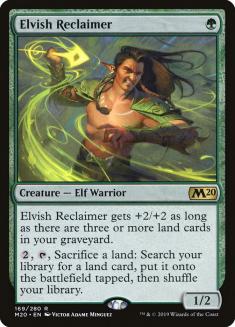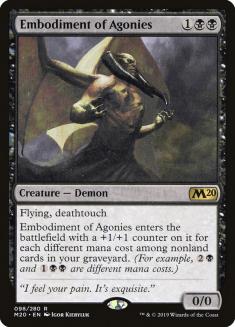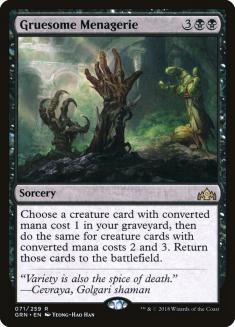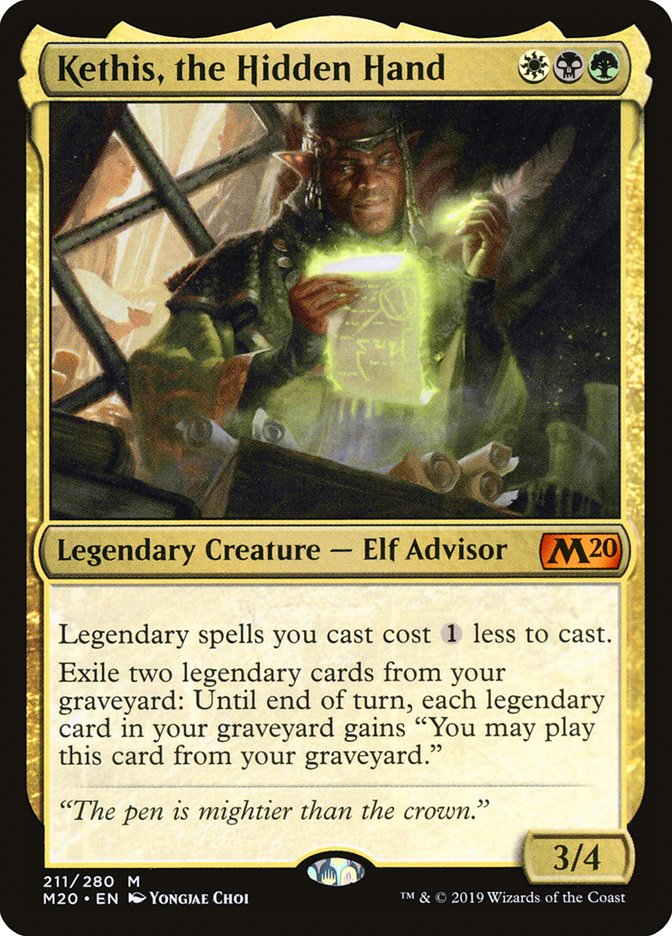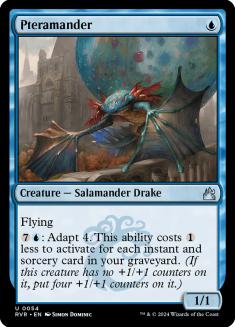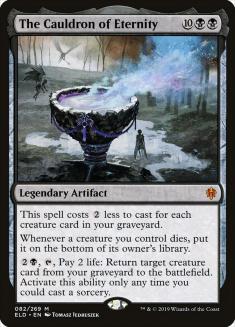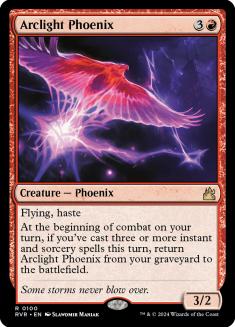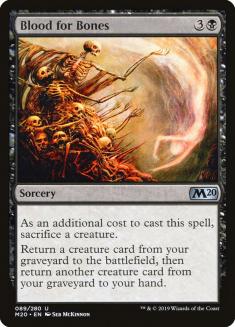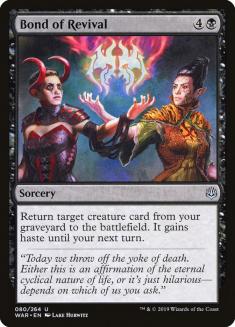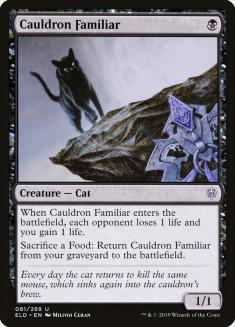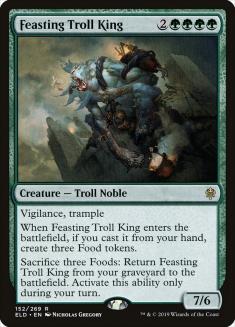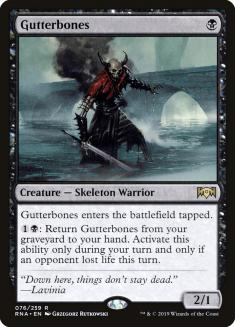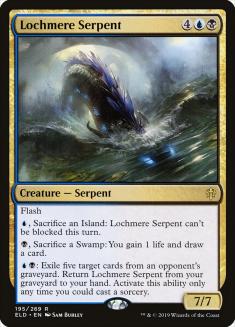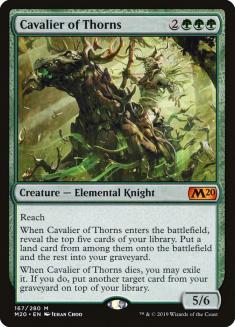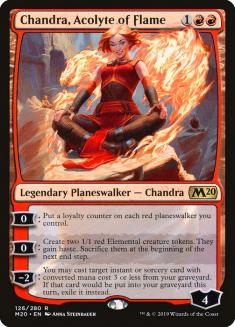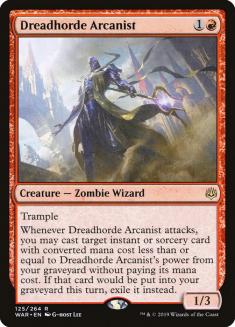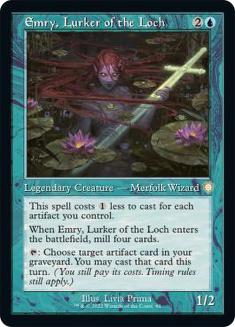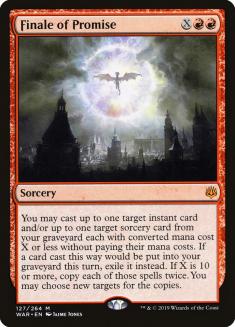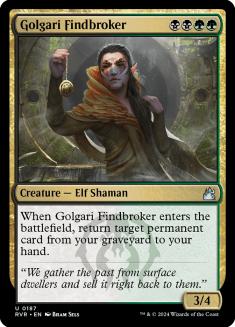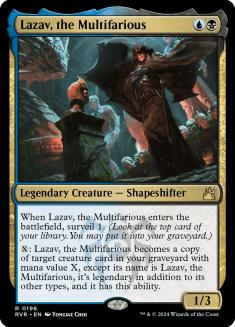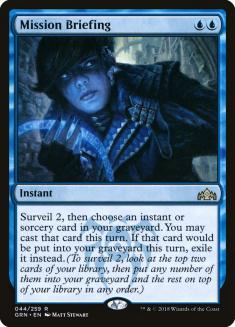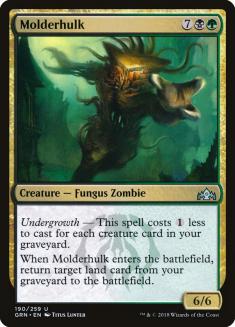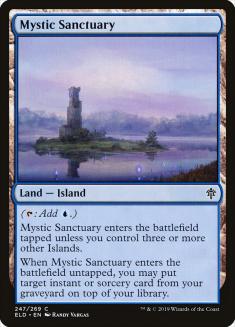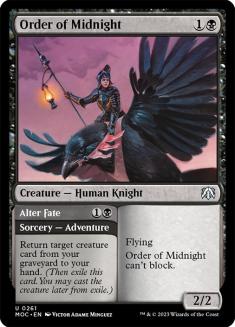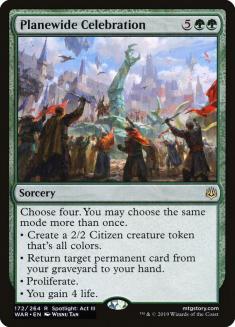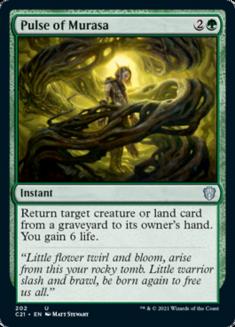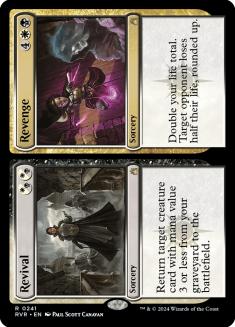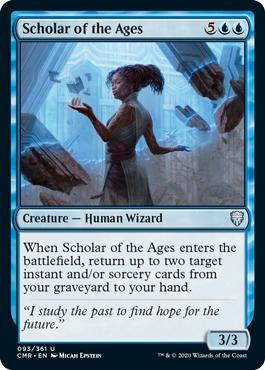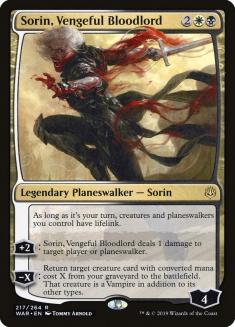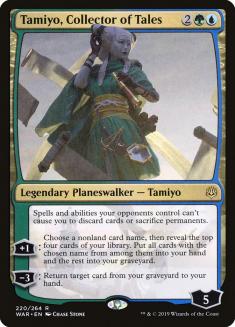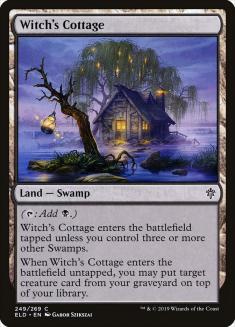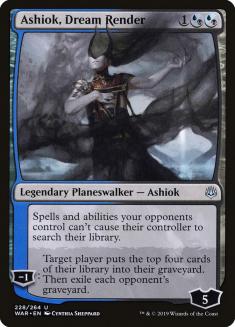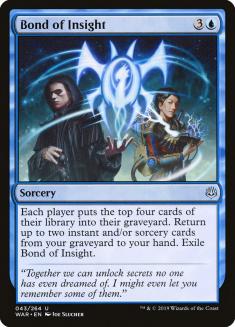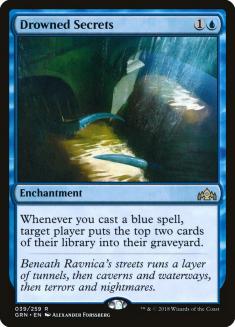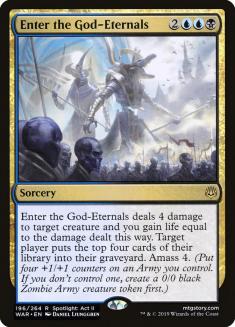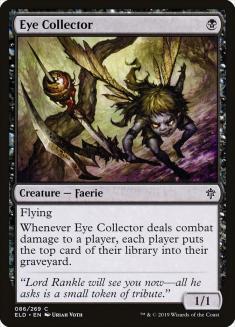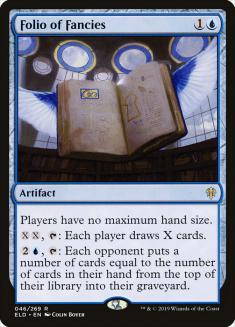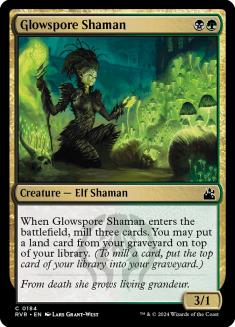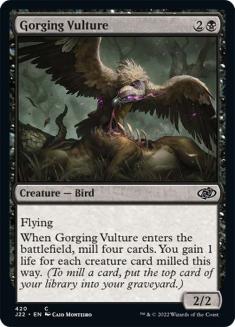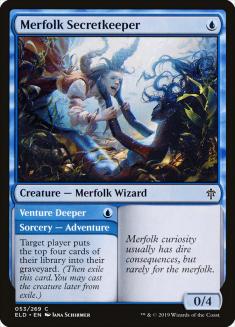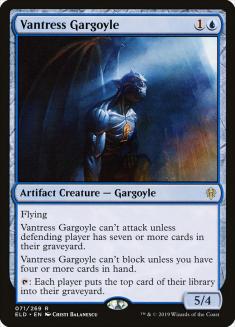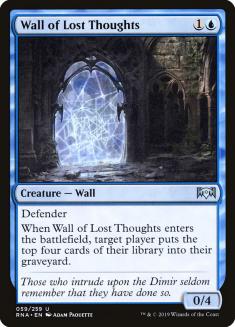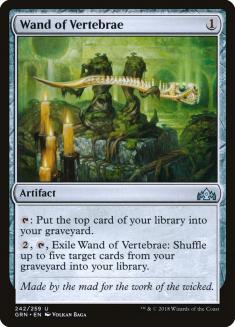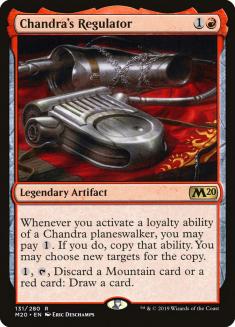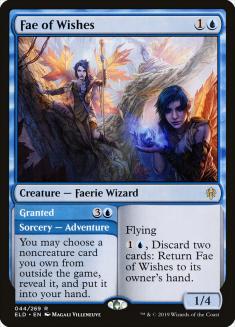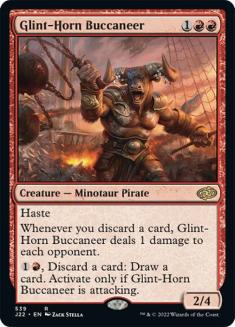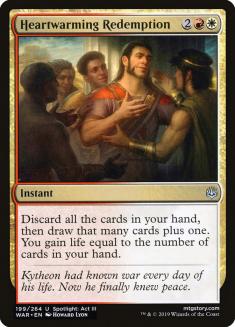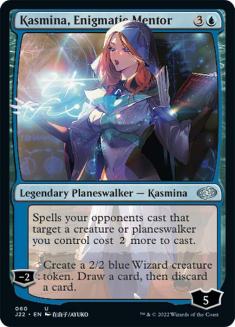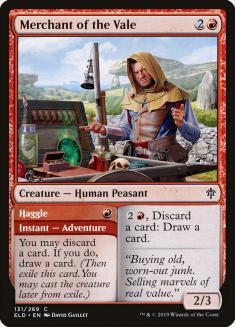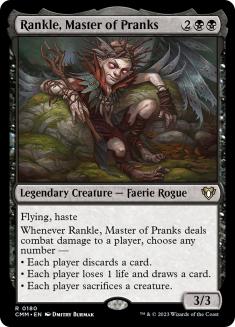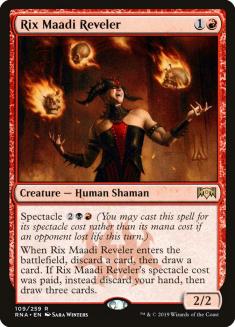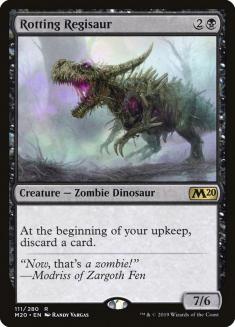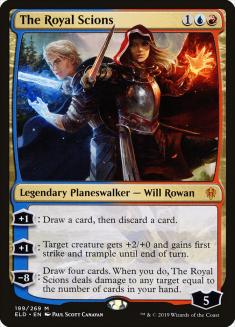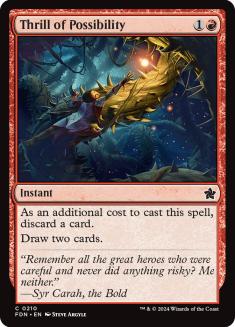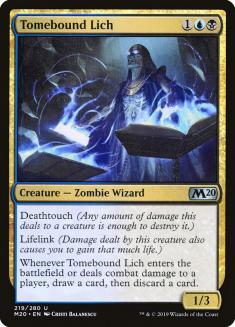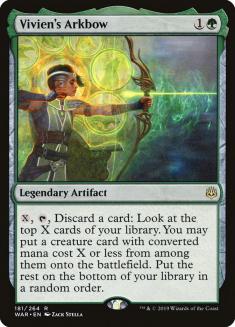Throne of Eldraine Standard has the potential to focus on the graveyard in a way that we’re used to seeing in Modern, not Standard, and understanding how it will be used and where you need to be ready to interact with it is going to be a cornerstone of the coming format. Today, I’m going to explore as many ways that we’ll see the graveyard used as I can find.
First, the big graveyard payoffs, including the undergrowth mechanic and these cards:
This isn’t a comprehensive list, depending on where you draw the line. For example, Vivid Revival wants you to have a large graveyard, but I don’t think it’s strong enough to be noteworthy, and Finale of Eternity cares about your graveyard only if X is ten or greater, which isn’t really the purpose of the card. These are the cards that I think have the most potential for specifically rewarding you for getting a lot of cards (of some particular type) into your graveyard.
Next, cards that want you to get a specific card into your graveyard, either the card in question or a card it works with:
Again, not exactly a comprehensive list, as this involves some close judgment calls and Bond of Revival is kind of standing in for a lot of five-mana reanimation options, but these are many of the cards that point you toward wanting to get specific cards in your graveyard, so these are cards that you might consider in a deck that’s using discard outlets rather than self-mill to enable a graveyard interaction, for example.
Next, simple, efficient recursion that turns the graveyard into a toolbox:
Again, an approximate list with a lot of judgment calls. Many of these overlap with the next list, which is self-milling enablers. Alongside the surveil mechanic:
And finally, discard outlets that can be used as graveyard enablers:
The tools are available, but how to put them together remains unknown, as does how any sort of graveyard strategy would stand up against the other options available in the format, like the tried-and-true strategies we’ve come to expect: Red-based Aggro, Knights, Simic Flash, Blue-based Control, and Green-based Ramp with planeswalkers.
So let’s look at some possible graveyard decks.
First, this sweet deck by Will Erker:
Where I’m Currently at with UB Self Mill for new Standard. Deck is wild. pic.twitter.com/76JaFv3NCu
— Will Erker (@WillErker) September 22, 2019
I love the low curve and the cheap enters-the-battlefield creatures with four toughness that combine perfectly with Witch’s Oven. Castle Locthwain is awesome with the super-low curve and access to lifegain from Food. Radical Idea and Rotting Regisaur give you good outlets in case you draw Feasting Troll King. This list is really sweet. I think I’d like to see Necrotic Wound to have some interaction, but I also like the instinct to start as focused as possible on the synergies.
Feasting Troll King can also add a graveyard element to a Food deck rather than just being treated as a Standard-legal approximation of Hogaak, Arisen Necropolis:
Creatures (17)
Planeswalkers (7)
Lands (15)
Spells (21)

This is a green deck that just splashes blue, which allows it to use Gingerbread Cabin, which might not look that exciting on its surface, but I expect to really shine in conjunction with Trail of Crumbs. This deck also uses Emry to assemble the combination of Stonecoil Serpent and The Great Henge, which essentially allows you to pay for The Great Henge in two installments, while also just being able to use Emry as a card draw engine with Golden Egg. I’m a little skeptical of Wicked Wolf, but in this deck I think it’s actually more likely that I’d want more of them rather than fewer, as I am desperate for removal and appreciate the free sacrifice outlet for Food if I’m just looking to trigger Trail of Crumbs.
I’m not using Once Upon a Time because it doesn’t find the most important cards: Trail of Crumbs; Oko, Thief of Crowns; and Nissa, Who Shakes the World. This deck is really good at using mana, so spending two mana to cast Once Upon a Time would be pretty bad. I also don’t need it to fix my mana.
Kethis, the Hidden Hand was the center of a powerful graveyard-based combo deck in the previous season, but without Mox Amber, there’s no way to generate mana for any kind of loop. I still wonder if “fair mode” Kethis can compete:
Creatures (21)
- 3 Lazav, the Multifarious
- 3 Fblthp, the Lost
- 2 Golos, Tireless Pilgrim
- 4 Kethis, the Hidden Hand
- 1 Questing Beast
- 4 Emry, Lurker of the Loch
- 4 Stonecoil Serpent
Planeswalkers (8)
Lands (23)
Spells (9)

Emry’s primary role here is just to fill the graveyard, but there are a few high-impact artifacts just to force the opponent to respect it occasionally, and the legendary artifacts are particularly sweet here, since Kethis and Emry can both let you cast them from the graveyard.
Another graveyard strategy that’s been successful previously is Reanimator, which has taken a lot of forms. I want to look at a version in a similar vein to Will Erker’s deck, but with more of a focus on The Cauldron of Eternity:
Creatures (30)
- 4 Wall of Lost Thoughts
- 1 Massacre Girl
- 4 Agent of Treachery
- 2 Vilis, Broker of Blood
- 4 Tomebound Lich
- 4 Emry, Lurker of the Loch
- 4 Vantress Gargoyle
- 3 Fae of Wishes
- 4 Merfolk Secretkeeper
Lands (17)
Spells (13)

This is a fantastic Blood for Bones deck, so it uses Mystic Sanctuary to take advantage of milling Blood for Bones. I could include a larger maindeck Mystic Sanctuary toolbox, especially Enter the God-Eternals, but I think just going to Blood for Bones should be enough.
I think this deck looks pretty good, and might just be a better version of the Feasting Troll King build of the deck, since Blood for Bones is likely easier than assembling three food, and you can theoretically cast your expensive creatures using mana in games that go long. Also, they’re probably stronger on the battlefield.
The last Emry deck I want to look at is inspired by a deck Andrew Cuneo showed me built around Doom Foretold and Dance of the Manse:
Creatures (8)
Planeswalkers (4)
Lands (19)
Spells (29)

Doom Foretold is a tricky card to evaluate without having played with it, but it might be very strong in a deck that has a lot of nonsense to sacrifice, since the nontoken clause means that the opponent will almost always have to sacrifice something that matters. They can get out of it by leaving an empty battlefield and giving you the final payoff, but in the games where that happens, Dance of the Manse to get it back really shines.
Command the Dreadhorde is another card that’s proven itself in Standard, both as a finisher in Esper and as the centerpiece of the Four-Color Dreadhorde decks that were popular before Core Set 2020, but with the rotation of Wildgrowth Walker, the deck looks pretty different. The issue is that Command the Dreadhorde costs life, and Wildgrowth Walker was a great way to offset that and allow you to cast the namesake card several times, often while actually coming out ahead on life. Without that, we need to work harder to have enough life to work with:
Creatures (22)
- 4 Risen Reef
- 2 Yarok, the Desecrated
- 4 Leafkin Druid
- 4 Cavalier of Thorns
- 4 Healer of the Glade
- 4 Gilded Goose
Planeswalkers (8)
Lands (20)
Spells (10)

Healer of the Glade; Yarok, the Desecrated; and Food tokens offer this deck ways to gain life, while Oko, Thief of Crowns gives the deck an answer to problematic creatures that doesn’t require playing a dedicated removal spell. Hydroid Krasis is notably absent from this list, which could certainly be a mistake, but I prefer to focus on trying to go off with Risen Reef in the maindeck of decks like this and leave Hydroid Krasis as a sideboard card for grindier games, which is to say it comes in for most matchups, but it’s a better card in sideboard games.
The next deck I want to look at is Golgari Undergrowth:
Creatures (33)
- 1 Izoni, Thousand-Eyed
- 2 Molderhulk
- 1 Midnight Reaper
- 2 Golgari Findbroker
- 4 Glowspore Shaman
- 1 Kraul Foragers
- 4 Growth-Chamber Guardian
- 1 Cavalier of Night
- 3 Elvish Reclaimer
- 1 Knight of the Ebon Legion
- 1 Cavalier of Thorns
- 3 Gorging Vulture
- 4 Gilded Goose
- 3 Murderous Rider
- 2 Blacklance Paragon
Lands (20)
Spells (7)

This is another deck that’s built to take advantage of one of the common lands from Throne of Eldraine, in this case, Witch’s Cottage. This deck uses early self-mill creatures to enable Witch’s Cottage and Golgari Findbroker as late-game toolboxes, with Molderhulk and Elvish Reclaimer to offer extra access to Witch’s Cottage.
Next, I want to showcase some decks that are less focused on milling themselves to create a graveyard, and show how decks can incidentally take advantage of the graveyard in the upcoming Standard format, starting with Abzan Adventure.
Creatures (30)
- 4 Foulmire Knight
- 4 Order of Midnight
- 4 Lovestruck Beast
- 4 Murderous Rider
- 4 Faerie Guidemother
- 2 Giant Killer
- 4 Edgewall Innkeeper
- 4 Shepherd of the Flock
Lands (18)
Spells (12)

Most decks I’ve seen that try to use Lovestruck Beast don’t look like they’ll be able to attack with it reliably if the opponent can kill a 1/1 or two, but in addition to the token from Heart’s Desire, this deck has Foulmire Knight, Edgewall Innkeeper, and Faerie Guidemother to keep the Beast active. Edgewall Innkeeper is definitely the most important card in the deck, which is why this deck has four copies of Once Upon a Time to maximize your Innkeeper games.
Edgewall Innkeeper is fragile, which is where this deck’s recursion comes in with Order of Midnight to get back your Edgewall Innkeeper in addition to Shepherd of the Flock to protect it or to rebuy your Order of Midnight (or any other Adventure). With Lucky Clover, the amount of grinding this deck is capable of is crazy, especially considering the low curve of the deck.
Next up, Jund Aristocrats:
Creatures (21)
- 1 Midnight Reaper
- 4 Priest of Forgotten Gods
- 4 Paradise Druid
- 4 Gilded Goose
- 4 Korvold, Fae-Cursed King
- 4 Cauldron Familiar
Planeswalkers (3)
Lands (21)
Spells (15)

The double red for Chandra is a little awkward in a deck that only ever uses one mode of the planeswalker, but that mode is good enough that it’s worth it. This deck is like the previous deck in that it only has a single card that uses the graveyard, but it gets a ton of mileage out of that card. Cauldron Familiar is fantastic in this deck as a way to go crazy with Trail of Crumbs or Korvold, Fae-Cursed King, particularly if you can find Witch’s Oven.
The fundamental conceit of this deck is that Korvold, Fae-Cursed King is fantastic and not just a Brawl card. I’m very optimistic about it.
It will be interesting to see how much the metagame pushes players to play graveyard hate moving forward. For a small Standard, there looks to be a really good variety of viable strategies, and there’s a good chance that Standard will either be about pure speed or haymakers, which are both axes that recursion doesn’t fight well on, though some of these strategies make great haymaker decks. If everyone’s concerned with planeswalkers, aggressive creatures like Knights, and spells on the stack, a graveyard deck could be a great way to catch people off-guard.


